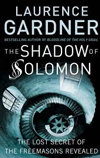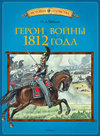
-
 Anglický jazyk
Anglický jazyk
Late Prehistoric and Early Historic Landscapes on the Yorkshire Chalk
Autor: Chris Fenton-Thomas
This study looks at the changing landscape of the Yorkshire Wolds from the Late Bronze Age up until the period prior to the Norman Conquest. This is a very large area so only a small section of this is studied in depth, namely the central Wolds area to the... Viac o knihe
Na objednávku
129.06 €
bežná cena: 143.40 €
O knihe
This study looks at the changing landscape of the Yorkshire Wolds from the Late Bronze Age up until the period prior to the Norman Conquest. This is a very large area so only a small section of this is studied in depth, namely the central Wolds area to the west of Driffield, which today encompasses eight modern parishes. This area has several different types of landscape commonly present in the Wolds: rolling countryside, broad sweeping valleys, springhead streams, the high dissected western Wolds, the western margins of the Wolds, and the high central Wolds watershed. This area includes all general topographies found in the Wolds and and therefore acts as a sample zone for comparisons between these different landscapes. The study starts by looking at this area during the Late Bronze Age, and this was when large areas of land were enclosed by linear earthworks comprising ditches, banks and walls. Fenton-Thomas looks at the origins of these linear ditches, and outlines the roles that these earthworks played. The study then goes on to look at the early and middle Iron Age periods, which were contemporary with square barrow cemeteries, and this period had an open and mobile landscape. The later period of the Iron Age was more occupied and enclosed, and this period prior to the Roman conquest was one of change, when the Wolds were an area of mainly pastureland which was separate from the lowland areas. Fenton-Thomas looks at the historical evidence from the twenty towns from the detailed study area, with the aim of finding out what the landscape was like before parliamentary enclosure. He then goes on to give an overview of the Wolds landscape before the Norman Conquest, using both historical and archaeological evidence. The picture emerges of an open and unenclosed landscape criss-crossed by trackways, which helped to structure township boundaries. During the medieval and post-medieval periods the large common field systems that existed can be seen, especially from place-names. Enclosures became more and more common as the Anglo-Scandinavian period began. Fenton-Thomas sums up his study by taking an overall perspective of the whole period, stressing the pattern of continuity and change that occurred, with periods of relative stability being followed by those of 'radical transformation'. The periodical isolation of the Wolds is also stressed, as is the importance of certain sites, but importantly the focus is on the influence of the past in patterns of continuity and change.
- Vydavateľstvo: British Archaeological Reports Oxford Ltd
- Rok vydania: 2003
- Formát: Paperback
- Rozmer: 297 x 210 mm
- Jazyk: Anglický jazyk
- ISBN: 9781841715100






 Ruský jazyk
Ruský jazyk 





